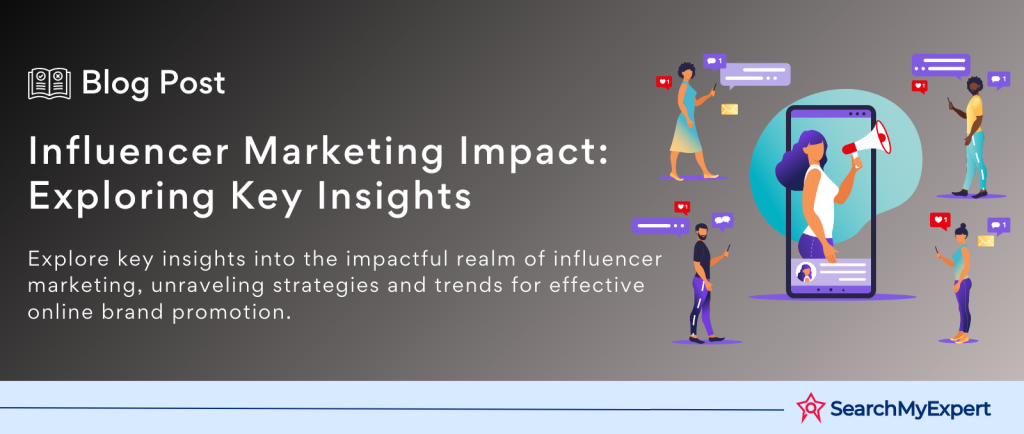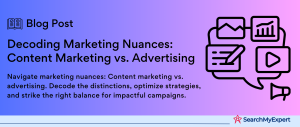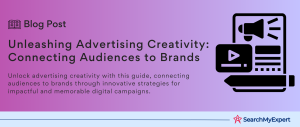The Essence of Influencer Marketing
Influencer marketing is a dynamic and impactful strategy, reshaping the landscape of advertising in the digital era. It involves collaborations between brands and influential individuals, often with a substantial online following, to promote products, services, or campaigns. This strategy leverages the credibility, relatability, and persuasive power of these influencers to impact consumer behavior.
The Surge of Popularity
In recent years, influencer marketing has soared in popularity, becoming a cornerstone of many brand strategies. This upswing is largely attributed to the deepening penetration of social media into daily life and the evolving consumer preference for authenticity over traditional advertising. Influencers, with their ability to connect personally with their audience, offer a more organic and trust-based approach to marketing.
Impact on Advertising Landscape
The impact of influencer marketing on the advertising world is profound. Brands are shifting significant portions of their marketing budgets towards influencer collaborations, recognizing the high return on investment these partnerships can yield. This strategy not only enhances brand awareness but also drives sales, as influencers can sway their followers’ purchasing decisions through personal endorsements.
Changing Consumer Behavior
Influencer marketing is reshaping consumer behavior. Audiences, especially younger demographics, are increasingly looking to influencers for product recommendations, lifestyle tips, and more. This shift signifies a change in how people consume advertising, preferring peer opinions and relatable content over traditional ads.
Diverse Platforms and Forms
Influencer marketing thrives across various social media platforms, including Instagram, YouTube, TikTok, and more. Each platform offers unique ways for influencers to connect with their audience, from visually-driven posts on Instagram to engaging video content on TikTok. The versatility of this strategy allows for creative and diverse marketing approaches.
Evolution of Influence: Tracing the History of Influencer Marketing
From Celebrity Endorsements to Social Media Creators
Influencer marketing, while seemingly a modern phenomenon, has roots that trace back to traditional celebrity endorsements. Historically, brands leveraged the fame and appeal of celebrities to advertise their products, tapping into the celebrities’ wide-reaching influence.
The Early Days
In the early days of influencer marketing, celebrity endorsements were the gold standard. Brands sought high-profile figures in entertainment, sports, and other fields to endorse their products, leveraging the celebrities’ mass appeal to reach a broad audience.
Shift to Niche Influencers
As social media platforms emerged and grew, the landscape of influencer marketing began to shift. The rise of platforms like Instagram, YouTube, and later TikTok, gave birth to a new breed of influencers: social media creators. These individuals, often without traditional celebrity status, amassed large followings due to their niche content, relatability, and engagement with their audience.
The Role of Social Media
Social media transformed influencer marketing by democratizing influence. Unlike traditional celebrities, social media influencers often built their followings from the ground up, creating content that resonated with specific audiences. This shift allowed brands to target niche markets more effectively than ever before.
Personal Connection and Engagement
The key difference between traditional celebrity endorsements and modern influencer marketing lies in the level of personal connection and engagement. Social media influencers often have a more intimate relationship with their audience, fostering a sense of trust and community that traditional celebrities may not achieve.
The Impact of Micro-Influencers
An important evolution in influencer marketing is the rise of micro-influencers—individuals with smaller, but highly engaged, followings. Brands are increasingly recognizing the value of partnering with these influencers, as they often boast higher engagement rates and a more dedicated audience than larger influencers.
The Power of Authenticity in Influencer Marketing
Trust and Connection: The Influencer Edge
In the realm of influencer marketing, authenticity is the cornerstone. Unlike traditional advertising, which often comes across as scripted and impersonal, influencer content is perceived as genuine and relatable. This perception stems from the personal brand that influencers cultivate – a blend of their real-life experiences, opinions, and personal narratives.
Building Trust
Influencers build trust with their audience through consistent, authentic content that resonates on a personal level. This trust is not easily replicated in traditional advertising. Influencers often share their lives, values, and beliefs with their followers, creating a sense of friendship and loyalty.
Connection Through Relatability
The connection between influencers and their audience is further strengthened by relatability. Influencers often come across as peers to their followers, making their recommendations and endorsements feel like advice from a friend rather than a sales pitch.
Earned Media and Organic Reach
In the influencer marketing context, earned media refers to the publicity gained through promotional efforts other than paid advertising. It includes word-of-mouth, recommendations, and content shared by influencers on their platforms.
Organic Reach vs. Paid Promotion
Organic reach in influencer marketing signifies the natural spread of content without paid promotion. It’s driven by the authenticity and quality of the content and the influencer’s relationship with their audience. In contrast, paid promotions are overtly sponsored content. While they have their place, they often lack the trust and engagement that organic content commands.
The Value of Earned Media
Earned media is particularly valuable because it is unsolicited and appears more authentic to audiences. When an influencer genuinely loves a product and talks about it, their audience is more likely to trust their opinion over a paid advertisement.
Deconstructing the Influencer Landscape
Categorizing Influencers: Reach, Niche, and Engagement
The influencer landscape is diverse, with influencers categorized based on factors like reach, niche, and engagement metrics. This categorization helps brands identify the right influencers for their campaigns.
Micro, Macro, and Mega Influencers
- Micro-Influencers:
Typically have followers ranging from 1,000 to 100,000. Known for high engagement rates and niche audiences, they offer authenticity and targeted reach. - Macro-Influencers: Boasting followers between 100,000 and 1 million, they offer a balance between reach and engagement, suitable for wider but still targeted campaigns.
- Mega-Influencers:
With over 1 million followers, they offer massive reach but often lower engagement rates. They are ideal for broad awareness campaigns.
Analyzing Strengths and Drawbacks
Micro-Influencers
- Strengths: High engagement, niche targeting, cost-effective.
- Drawbacks:
Lowest engagement rates, high costs, less personal connection with the audience.
Choosing the Right Influencer Type
The choice of influencer depends on the campaign’s goals. For niche products, micro-influencers might be the best bet, while macro and mega-influencers are better suited for broader campaigns and brand awareness.
Building Effective Partnerships in Influencer Marketing
Identifying and Connecting with the Right Influencers
The foundation of a successful influencer marketing campaign lies in forming effective partnerships. This process involves several key steps:
Research and Identification
- Define Your Target Audience:
Understanding your target demographic is crucial. This shapes the type of influencers you should partner with. - Identify Potential Influencers:
Look for influencers whose followers align with your target audience. Utilize social media tools and platforms to discover potential partners. - Evaluate Influencer Content: Assess the quality, style, and relevance of the influencer’s content to ensure brand compatibility.
Connecting and Collaborating
- Initial Outreach: Reach out with a personalized approach, showing that you’ve engaged with their content.
- Discuss Collaboration: Be clear about what you’re offering and what you expect in return. Discuss content guidelines, timelines, and compensation.
Establishing a Partnership
- Negotiate Terms: Finalize details like campaign duration, content frequency, and payment terms.
- Contract Agreement: Ensure legalities are covered with a clear contract outlining all terms of the partnership.
Importance of Brand Alignment and Transparent Communication
Brand Alignment
- Consistency with Brand Values:
The influencer’s image and message should align with your brand’s values and aesthetics. - Audience Relevance:
The influencer’s audience should be your target market.
Transparent Communication
- Clarity of Expectations: Both parties should have a clear understanding of the campaign goals, content requirements, and metrics for success.
- Ongoing Dialogue:
Maintain regular communication throughout the campaign for feedback and adjustments.
Beyond the Post: Measuring Success in Influencer Marketing
Moving Past Vanity Metrics
While likes and shares (vanity metrics) give an initial indication of engagement, they don’t fully capture the impact of an influencer marketing campaign. It’s important to look at metrics that directly correlate to your marketing objectives.
Key Performance Indicators (KPIs)
- Engagement Rate:
Measures how actively involved the audience is with the content. - Conversion Rate:
Tracks how many people took a desired action (like making a purchase). - Brand Sentiment: Assesses how the influencer’s content affects audience perception of your brand.
- Reach and Impressions: Evaluates how far the content has traveled and how many times it’s been seen.
Tools and Techniques for Tracking
- Analytics Tools: Use social media analytics and third-party tools to track detailed metrics.
- UTM Parameters:
Implement UTM codes to track website traffic and conversions from influencer campaigns. - Surveys and Polls: Conduct audience surveys to gather feedback on brand sentiment and recognition.
- ROI Analysis:
Calculate the return on investment to understand the financial impact of the campaign.
Emerging Trends in Influencer Marketing
The influencer marketing landscape is constantly evolving, driven by technological advancements and changing consumer behaviors. Here, we explore key trends that are shaping the future of influence.
Influencer-Generated Content (UGC)
- Definition: UGC refers to content created by consumers or influencers, rather than brands. In the context of influencer marketing, it’s about leveraging the creativity of influencers to generate authentic content.
- Impact: UGC has a raw, unfiltered quality that resonates with audiences. It often feels more genuine than professionally produced brand content.
Live Commerce
- What is Live Commerce?: Live commerce combines live streaming with the ability to purchase products in real-time. Influencers use platforms like Instagram Live or TikTok to showcase products.
- Benefits:
This trend capitalizes on the ‘in-the-moment’ excitement, potentially driving impulsive purchases and higher engagement.
Social Communities
- Role of Communities:
Influencers often nurture online communities around specific interests or lifestyles. - Significance: These communities can be powerful for brands, as they represent highly engaged and targeted audiences.
Ethical Considerations and Challenges
As influencer marketing evolves, it faces several ethical considerations and potential challenges.
Authenticity vs. Commercialization
- Challenge:
Balancing authenticity with increasing commercialization is a major challenge. There’s a risk of influencers losing credibility if they appear too commercial. - Solution:
Maintaining a genuine connection with the audience and transparently disclosing partnerships are key.
Data Privacy and Ethics
- Concern: With the rise of data-driven marketing, respecting consumer privacy and adhering to data protection regulations is crucial.
- Approach:
Brands and influencers must ensure compliance with laws like GDPR and be transparent about data usage.
Diverse and Inclusive Representation
- Need for Diversity:
The growing call for diversity and inclusion in marketing means influencers and brands need to be more representative of different communities. - Commitment: Brands should partner with a diverse range of influencers to authentically represent different voices and perspectives.
Sustainable and Responsible Marketing
- Sustainability Concerns: There’s an increasing focus on sustainability and ethical marketing practices.
- Responsibility: Influencers and brands should promote sustainable products and practices, contributing positively to social and environmental causes.
Conclusion
Influencer marketing has undeniably transformed the advertising landscape, evolving from traditional celebrity endorsements to a diverse, dynamic world of digital influencers. This journey reflects a profound shift in consumer behavior and marketing strategies, driven by the need for authenticity, relatability, and personal connection in brand messaging.
The rise of micro, macro, and mega influencers has diversified the reach and impact of influencer marketing, allowing brands to connect with niche audiences and achieve broad-scale awareness. The ethical dimensions, including transparency, diversity, sustainability, and data privacy, have become increasingly important, guiding the future trajectory of influencer marketing.
As we look ahead, trends like influencer-generated content, live commerce, and the growth of social communities hint at an even more interactive and immersive future. The challenges of balancing authenticity with commercialization, managing diverse representation, and measuring true impact remain key focus areas.
Partner with top Advertising Agencies for creative solutions.
Table of Contents
Toggle






